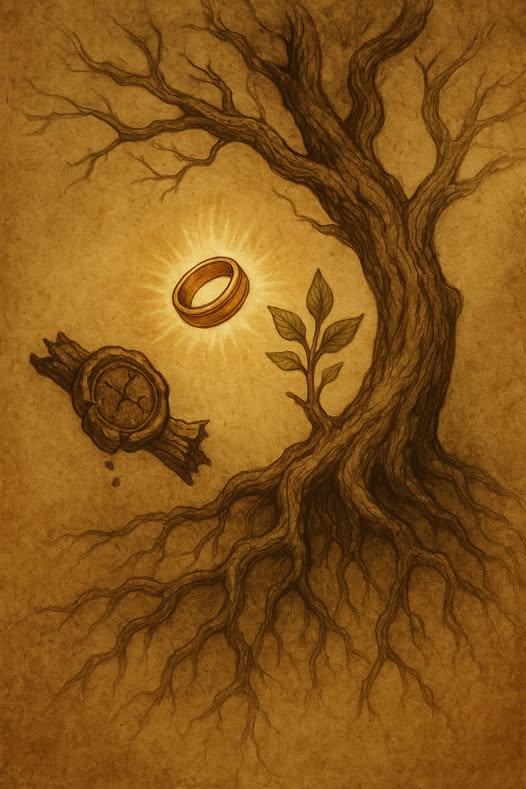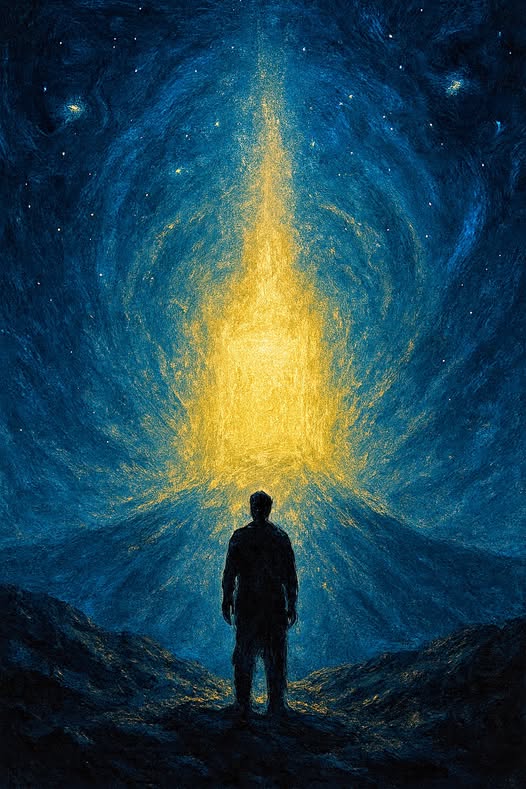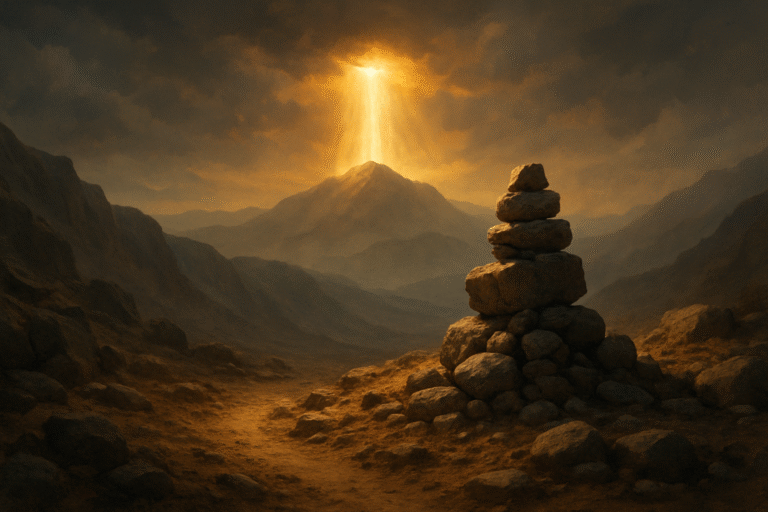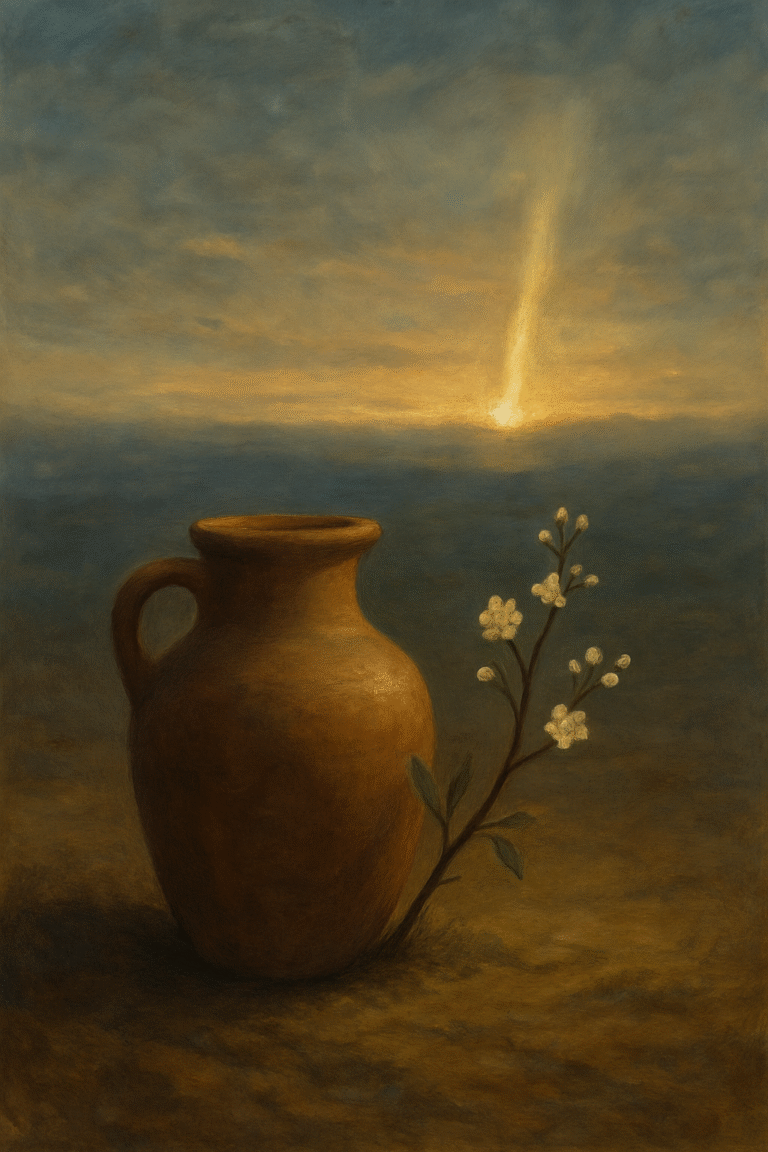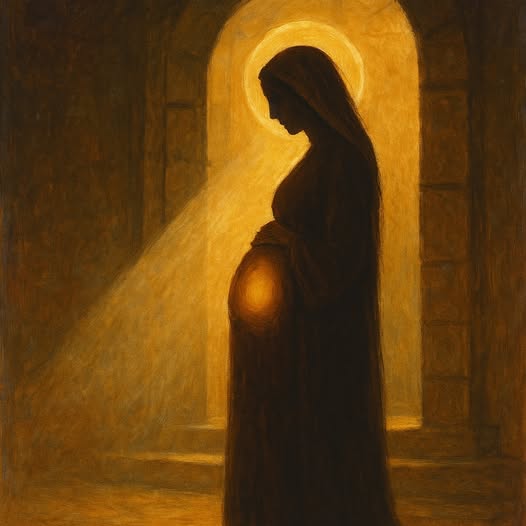
Across ancient cultures, including Mesopotamia, Greece, and Rome, the era preceding the great flood is often idealized as a utopian “Golden Age.” This period is frequently portrayed as a time of abundance, peace, and divine-human harmony.
Mesopotamian Myths:
- Sumerian King List: Depicts pre-Flood kings reigning for astonishingly long periods, symbolizing stability and prosperity.
- Epic of Gilgamesh: Celebrates the pre-Flood era as an age of heroes and divine-human hybrids, nostalgically remembered as adventurous and grand.
- Atrahasis Epic: Illustrates an era of peace and fertility, marked by humanity’s closer proximity to gods before their noise angered the divine beings, prompting a catastrophic flood.
Greek and Roman Narratives:
- Hesiod’s “Works and Days”: Characterizes the Golden Age as harmonious and carefree, with humans experiencing no pain, labor, or conflict, living in peace alongside the gods.
- Ovid’s “Metamorphoses”: Describes a world without punishment or hardship, with the earth naturally providing abundant resources, reflecting humanity’s pure and innocent state before divine judgment.
Genesis 6: A Stark Contrast (A Biblical Polemic)
Genesis 6 should be understood as a polemic—a text written as a direct challenge or refutation of surrounding cultural beliefs. Rather than aligning with the romanticized Golden Age narratives found in Mesopotamian, Greek, and Roman traditions, Genesis 6 intentionally subverts these ideas. A polemic in this context is a theological argument crafted to correct or oppose rival worldviews, demonstrating Yahweh’s distinct moral and spiritual standards over and against the flawed portrayals of divine-human relations seen in neighboring cultures.
Unlike these romanticized narratives, Genesis 6 offers a profoundly different portrayal of the pre-Flood world, focusing explicitly on moral and spiritual corruption rather than idyllic harmony.
Moral and Spiritual Decay:
Genesis directly highlights widespread corruption and violence:
“Now the earth was corrupt in God’s sight, and the earth was filled with violence. And God saw the earth, and behold, it was corrupt, for all flesh had corrupted their way on the earth.” (Genesis 6:11-12)
Far from depicting a lost paradise, Genesis emphasizes moral degradation and societal collapse.
Divine-Human Interactions as Rebellion:
Rather than peaceful coexistence, Genesis portrays the interactions between “sons of God” and “daughters of man” negatively:
“The sons of God saw that the daughters of man were attractive. And they took as their wives any they chose… The Nephilim were on the earth in those days…” (Genesis 6:2-4)
These unions symbolize rebellion, amplifying humanity’s spiritual and moral corruption.
Judgment and Grief, Not Nostalgia:
Genesis does not frame the Flood as arbitrary divine wrath or nostalgia-driven loss but as necessary judgment resulting from deep-seated corruption:
“And the Lord regretted that he had made man on the earth, and it grieved him to his heart. So the Lord said, ‘I will blot out man whom I have created… for I am sorry that I have made them.'” (Genesis 6:6-7)
The text emphasizes divine grief over humanity’s wickedness, presenting the Flood as an act of moral necessity.
Nephilim as Agents of Chaos:
Unlike celebrated heroes in other traditions, the Nephilim in Genesis embody chaos and spiritual disorder. Their existence signifies a critical breach between heaven and earth, reinforcing the narrative’s theme of corruption.
Second Temple and New Testament Demons vs. Greek Daemons
During the Second Temple Period and into the New Testament era, demons are depicted as the disembodied spirits of the Nephilim, reflecting chaos, corruption, and opposition to God’s order. Texts such as 1 Enoch and the writings from Qumran clearly associate demons with these rebellious hybrid spirits, emphasizing their malevolent nature and hostility toward humanity.
In contrast, Greek thought presented daemons as inspirational or guiding spirits. These beings were often seen as intermediaries between humans and the divine, capable of influencing human creativity, morality, and intellect positively. Socrates famously spoke of his “daimonion” as a guiding presence.
This stark contrast underscores fundamental differences between Jewish-Christian thought, emphasizing moral clarity and spiritual rebellion, and Greek philosophical traditions that valued intermediary spirits as helpful guides.
Saturn/Kronos, the Golden Age, and Forbidden Knowledge
The connection between Saturn (in Roman mythology) and Kronos (in Greek mythology) is central to the idea of the Golden Age. Kronos ruled during a period of peace, abundance, and harmony between gods and humans, before being overthrown by Zeus, which ended the idyllic era. The Romans adopted this imagery, linking Saturn to a Golden Age of equality and prosperity, commemorated annually with the Saturnalia festival. This reinforces how deeply the notion of a lost utopian age was ingrained in ancient imagination, highlighting even more the stark difference with Genesis’s portrayal of the pre-Flood world as corrupt and violent.
Additionally, within many ancient traditions, these so-called golden eras were associated with the transmission of divine or forbidden knowledge—skills, crafts, and insights that advanced humanity but also sowed seeds of corruption. In biblical tradition, particularly in texts like 1 Enoch, the Watchers imparted forbidden knowledge to humanity, including weaponry, sorcery, and astrology, which contributed directly to the world’s moral decay. This link between a golden age and the corruption that arises from forbidden knowledge underscores the biblical warning: what seems like a golden gift can carry destructive consequences when it transgresses divine boundaries. Some scholars have drawn parallels between Saturn/Kronos and Samyaza, the leader of the rebellious Watchers in 1 Enoch. Both figures are associated with a reign of abundance that ultimately collapses due to rebellion and the spread of forbidden knowledge, marking them as archetypes of authority corrupted by pride and disobedience.
This parallel is further underscored by New Testament references such as 2 Peter 2:4 and Jude 1:6, which describe the angels who sinned and were cast into Tartarus, a term directly borrowed from Greek mythology’s underworld, and held in chains until judgment. This reinforces the link between the biblical narrative and ancient myths, showing how the Watchers’ rebellion—mirroring Kronos’s downfall—resulted in their confinement and ultimate doom, tying the spiritual rebellion of Genesis 6 to later Christian teachings on divine justice and cosmic order.
The connection between Saturn (in Roman mythology) and Kronos (in Greek mythology) is central to the idea of the Golden Age. Kronos ruled during a period of peace, abundance, and harmony between gods and humans, before being overthrown by Zeus, which ended the idyllic era. The Romans adopted this imagery, linking Saturn to a Golden Age of equality and prosperity, commemorated annually with the Saturnalia festival. This reinforces how deeply the notion of a lost utopian age was ingrained in ancient imagination, highlighting even more the stark difference with Genesis’s portrayal of the pre-Flood world as corrupt and violent.
Sidebar: Saturn, Aquarius, and Eschatology
In esoteric traditions, Saturn’s connection to the Age of Aquarius symbolizes a return to ancient knowledge and societal transformation. Since Saturn traditionally ruled Aquarius, its association with both order and rebellion creates an intriguing parallel with biblical eschatology. While some view the Age of Aquarius as a golden age of enlightenment, the biblical worldview frames such a revival of ancient powers—linked to figures like Samyaza and the Watchers, who are closely linked to Azazel in 1 Enoch. While Samyaza is portrayed as the leader of the Watchers, Azazel is depicted as the one who taught humanity the most corrupting skills, especially warfare and sorcery. Together, they represent two sides of the same rebellion: Samyaza as the instigator and Azazel as the enabler of forbidden knowledge.
Azazel, in particular, is tied to the scapegoat ceremony described in Leviticus 16, where the sins of Israel were symbolically placed upon a goat sent into the wilderness ‘for Azazel.’ This ritual reflects the broader biblical theme of transferring and isolating sin, reinforcing Azazel’s association with corruption, judgment, and spiritual exile. Their joint influence deepens the biblical warning about spiritual corruption and mirrors the mythic downfall of Saturn/Kronos.—as part of the recurring rebellion that culminates in end-times judgment. This highlights the ongoing tension between human aspirations for utopia and God’s sovereign plan for restoration.
Conclusion
In reviewing ancient accounts of the pre-Flood world, a clear contrast emerges. Mesopotamian, Greek, and Roman traditions viewed the era before the flood as a golden time of prosperity, heroism, and harmony with the divine, often remembered with nostalgic reverence. In stark contrast, Genesis portrays a world spiraling into violence and corruption, necessitating divine intervention. This shift from idealized to condemned pre-Flood humanity reflects the Bible’s broader theological message: God is not impressed by earthly glory or strength but is deeply concerned with righteousness and faithfulness. The New Testament and Second Temple writings extend this by depicting demons as rebellious and destructive forces, unlike the more benign or helpful daemons of Greek tradition. Ultimately, the biblical worldview centers on God’s justice and redemptive plan, offering a unique and morally charged vision distinct from surrounding cultures.
Discussion Questions
- How does the biblical portrayal of pre-Flood corruption serve as a counter-narrative to the romanticized Golden Ages of surrounding cultures?
- Why do you think Genesis emphasizes the moral and spiritual dimensions of the Flood rather than presenting it merely as a natural disaster or divine annoyance?
- In what ways do the differing portrayals of pre-Flood life reflect fundamental differences between Yahweh and ANE or classical gods?
Recommended Verified Sources
- The Unseen Realm by Michael S. Heiser – Explores divine beings and ancient cosmology, clarifying Genesis’s supernatural worldview.
- Ancient Near Eastern Thought and the Old Testament by John H. Walton – Provides excellent comparisons between biblical narratives and ANE myths.
- The Lost World of the Flood by Tremper Longman III and John H. Walton – Examines the Genesis flood narrative in the broader context of ANE traditions.

